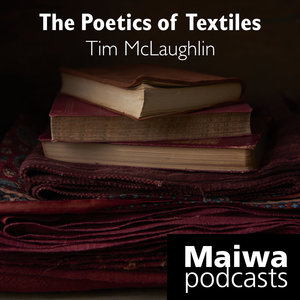On Thursday September 24th Eric Broug presented his lecture: The Compass and The World about Islamic geometric design. The principles of pattern creation and tessellation were discussed with many examples from historic buildings throughout the world.
Tim McLaughlin introduced the evening with the following remarks:
Great systems can be made from simple elements.
For example, two simple instruments — a compass and a straight edge— have been used to build at least two great systems.
One of them is the subject of tonight’s lecture, and so as not to give the game away. I’m going to talk about the other.
About two-thousand, three hundred years ago. A man took up a compass and a straight edge and began to investigate shapes. What were the relationships between lines and points, circles, squares, triangles, polygons, and sections of these shapes?
This was, of course, the greek mathematician Euclid, who did not discover everything from scratch, but built on the work of previous thinkers and incorporated these insights into a system. And the system was perhaps more powerful than what it described. Today we call it Euclidian geometry, and this system was a set of arguments that established the proof of a theorem through deductive reasoning. The proofs worked backward, rigorously, until they reached indisputable axiomatic truths. Such as: A straight line is the shortest distance between any two points.
Two thousand years after Euclid, Isaac Newton will set down a series of proofs concerning the motions of heavenly bodies. Many of these are geometric proofs.
This system, built from these two instruments has a monolithic importance in human history. The importance of the system extends far beyond mathematics, as the moral and humanist thinkers of the enlightenment attempted to give their arguments traction by formulating them on the Euclidian model. The hope was that one’s ideas could be shown to be as necessarily true as a geometric proof.
What can be discovered through the use of a compass and a straight edge seems to reveal something fundamental about the world.
That’s the big picture. But what might happen if you use these two instruments to explore aesthetics? Architecture? Or Design? To answer that question Eric Broug has traveled from the UK to meet us.
As a young man Eric came to the realization that he wanted to find something that would interest him forever and give him a meaningful life. Inspired by the book Arabic Geometrical Pattern and Design he began to go deeper but no matter how far he dived, he was amazed to see fathomless depths still beneath him. In his own words: “I made a deal with myself that I would pursue it not as a hobby, but as a calling.”
For ten years, he worked with a compass, ruler, pencil and paper and tried to deconstruct the patterns in this book in order to be able to reconstruct them. He moved to London to get a formal education at the Prince’s School of Traditional Arts. And next he moved to the School of Oriental and African Studies, in London, where he did his MA in the History of Islamic Art and Architecture.
He now lives in the North of England, where he works as a writer, educator, designer and artist. Please join me in welcoming Eric Broug.
Eric will teach three sold-out workshops while in Canada. We hope that he will return to visit us again soon. Here are some links to his resources.
Eric's Website:
http://www.broug.com/
Eric's TED lesson:
http://ed.ted.com/lessons/the-complex-geometry-of-islamic-design-eric-broug
Eric's Facebook Page:
https://www.facebook.com/eric.broug



























